Review: Virtual St. Paul’s Cathedral Project
Virtual St. Paul’s Cathedral Project
Virtual St. Paul’s Cathedral Project: A Digital Re-Creation of Worship and Preaching at St. Paul’s Cathedral in Early Modern London. https://vpcp.chass.ncsu.edu/. Created and maintained by various departments at North Carolina State University. https://vpcp.chass.ncsu.edu/project/production-team/. Reviewed Feb. 3, 2019.
The goal of the Virtual St. Paul’s Cathedral Project, as outlined in its purpose statement, is to explore public preaching in early modern London through the experience of the Paul’s Cross sermon. Using architectural modeling, acoustic simulation, artistic renditions of the sermons, and contemporary accounts of John Donne’s preaching style and structure, this project attempts to recreate the experience of witnessing one of the many public sermons given at St. Paul’s in the early 17th century.
Perhaps the most compelling component of the project is the detailed methodology that is outlined in the construction of acoustic simulation and architectural modeling. The creators of the project spare no detail in their overview of the process of attempting to reconstruct an experience that predates recording, photographic, or video technology.
The first step in constructing the experience was to recreate the physical environment in which the sermons took place. Using architectural records and contemporary artistic renditions of St. Paul’s Cathedral, the creators worked to craft a 3D virtual reality model of the cathedral as it would have existed in the early 17th century. By taking precise measurements of the physical structures in proximity to the churchyard, as well as the conditions of everyday life in the surrounding vicinity, the project succeeds in creating an interactive, three-dimensional way to envision the act of standing in the midst of the churchyard as the preacher prepares to begin a public sermon.
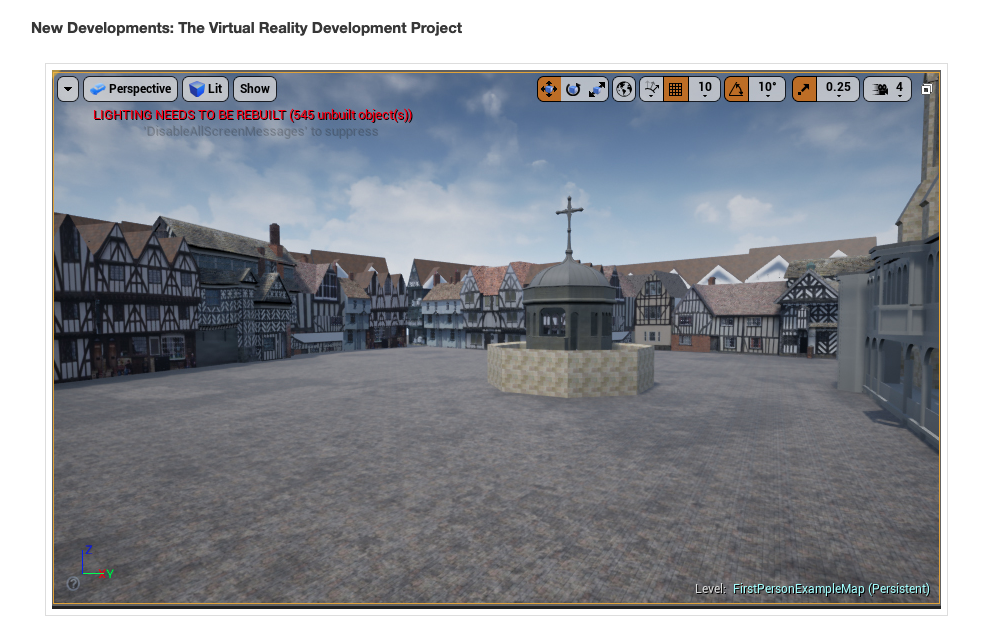
With the model of the physical structure of the cathedral and surrounding areas, the project consulted Ben Markham and Matt Azevedo, acoustic engineers at Acentech Incorporated out of Cambridge, MA. Markham and Azevedo utilized the virtual recreation of the physical environment to account for the impact of physical structures upon the acoustic environment likely to have been present during the time period. Their accounts also include ambient noise likely to have been present, including barking dogs, the rustle of footsteps, and the church bell, as well as varying simulations ranging from that of the empty churchyard to one of a bustling crowd awaiting the sermon.
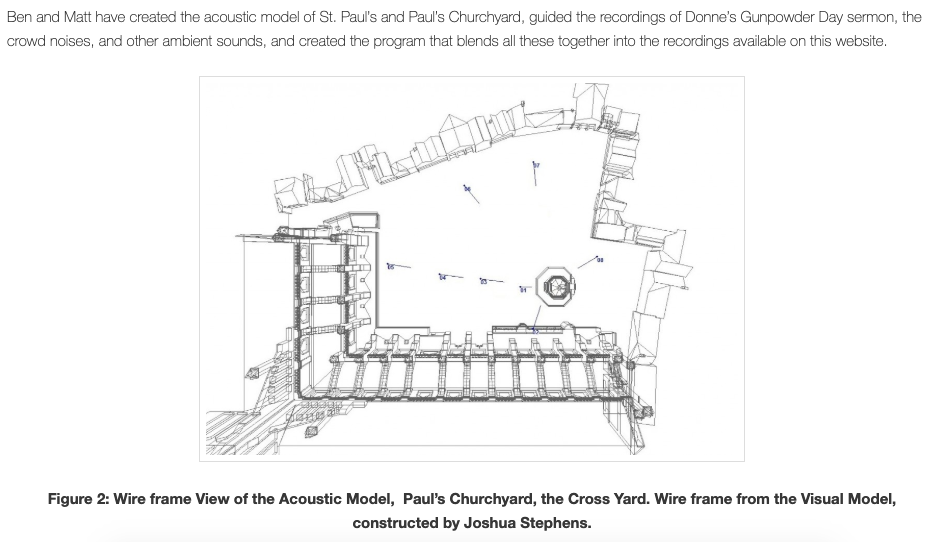
Next, the project seeks to understand and recreate the preaching style of John Donne, Dean of St. Paul’s during the 1620s. Though the project acknowledges the limits to their assumptions about Donne’s voice and preaching style due to the absence of audio recording, it incorporates tremendous detail in the analysis of Donne’s written sermons and contemporary accounts of his preaching style.
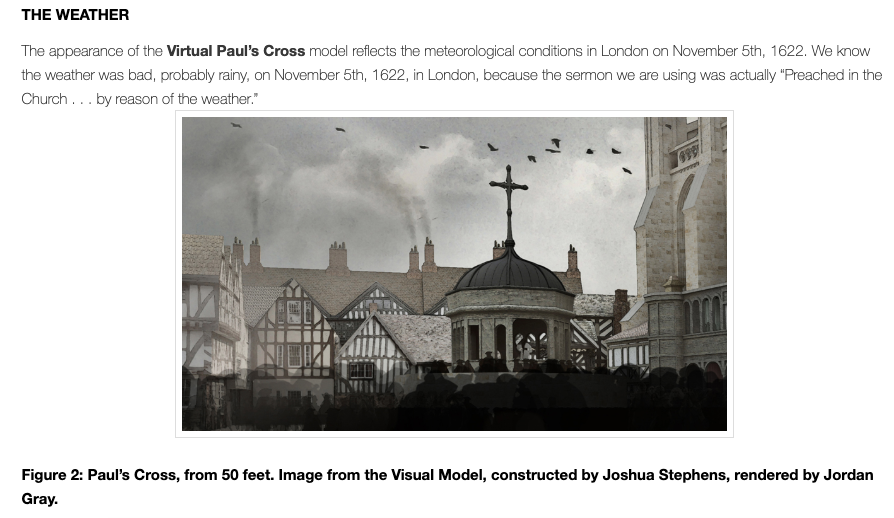
Even taking into account weather conditions, size the crowds, and the social environment of the time period, the project attempts to simulate the auditory experience of hearing Donne’s sermon on November 5, 1622. The project provides simulated audio from both the sermon house as well as the cross yard, citing various versions of Donne’s alleged script in recreating the most likely sermon he delivered upon that day. The project even includes a detailed methodology of how the script was developed, as well as a written copy of the simulated transcript that was developed.
The final products of this work take shape in several forms. As noted, the project includes an auditory recreation of the sermon, listed from two locations and broken into several parts (one of which is included above). The project also includes several “fly-throughs” of the virtual environment of the cathedral and church yard that was constructed.
The opening of the project installation was held in the Teaching and Visualization Lab at North Carolina State University’s James B. Hunt Library on November 5, 2013, coincidentally the 391st anniversary of the recreated sermon. The project website provides incredibly detailed accounts of the methodology, as well as video examples of the final product. Based upon the somewhat overwhelming level of detail provided in regard to the historical context and modeling processes, I would gather that the intended audience is largely academic or scientific, both those interested in the cultural and religious significance of the cathedral and sermon, as well as those interested in the process of constructing virtual models of the past.
In terms of interactivity, though the virtual reality model is not available on the website for browsing, there are numerous audio clips of the recreated acoustic environments, as well as embedded and linked videos of the virtual environment and recreated sermons. While many of the included architectural sources and artistic renditions could have easily been included in a print analysis, these audio and video examples are a major asset of the digital nature of the project’s presentation. These inclusions allow the reader to witness the experience that the project attempts to recreate, despite the lack of access of the virtual reality model.
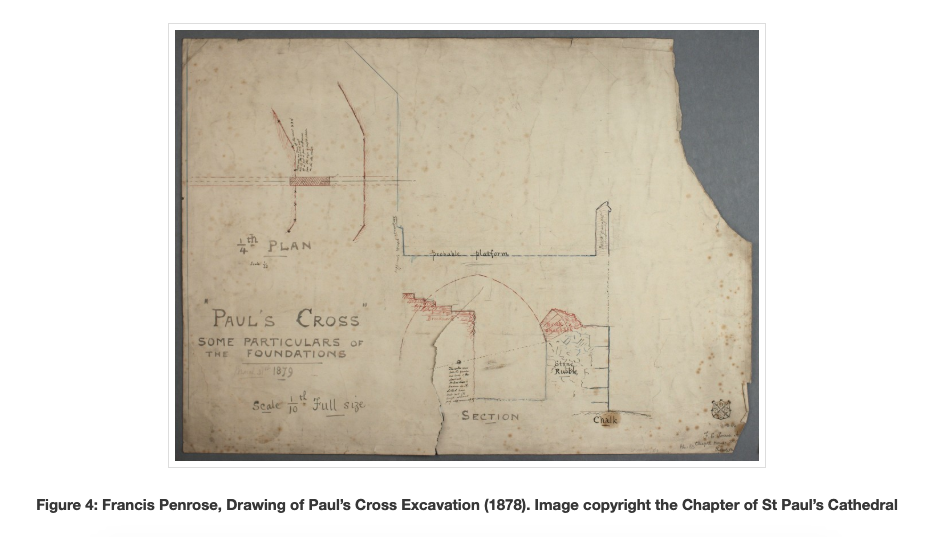
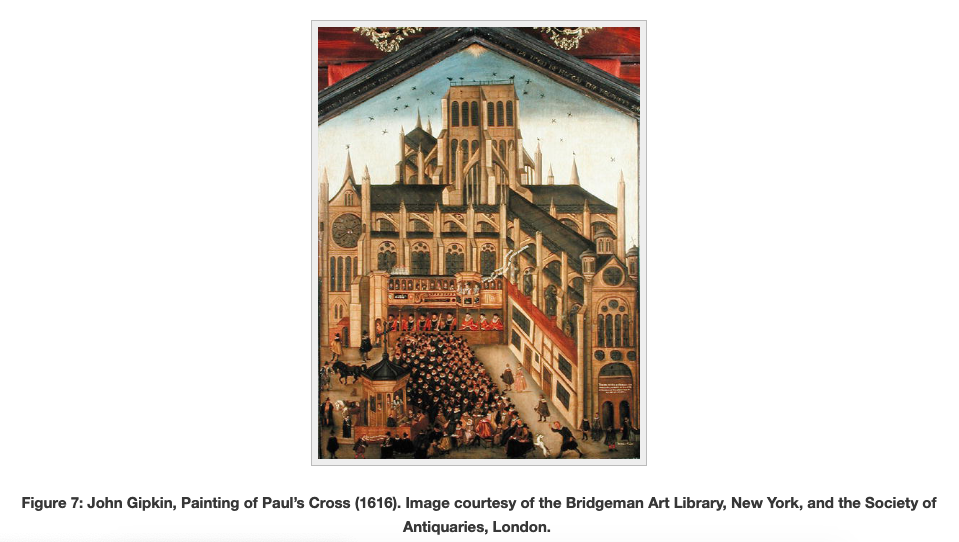
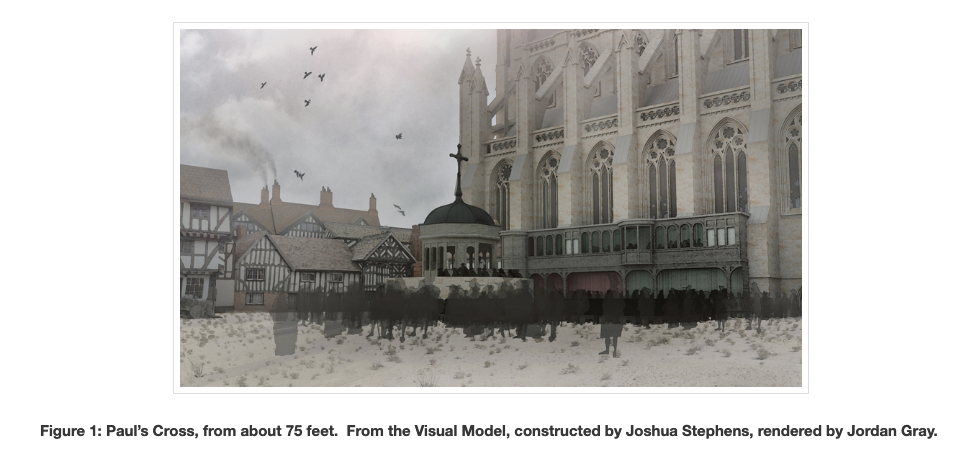
2 Comments
Maeve Kane
This is kind of a mean question, but: what do you think this project is supposed to add to our understanding of Donne’s preaching? What’s the value in this massive undertaking?
tluneau
That is certainly a valid question. While I will be the first to admit I have a very limited knowledge of John Donne and early 17th century England, I would gather that attempting to recreate the experience of his preaching would give us a greater understanding of the potential impact of his words in a “live setting”. Being able to hear the echo of his voice, the pauses utilized in preaching, and being able to “feel” the aura of the moment might give us greater insight as to why his audience became so captivated by his sermons, and would allow us to explore his reputation as a powerful preacher.